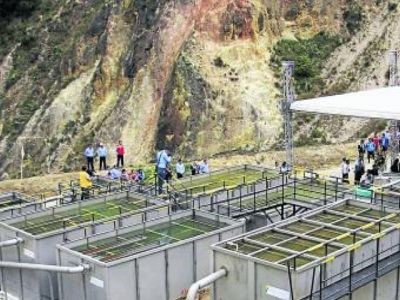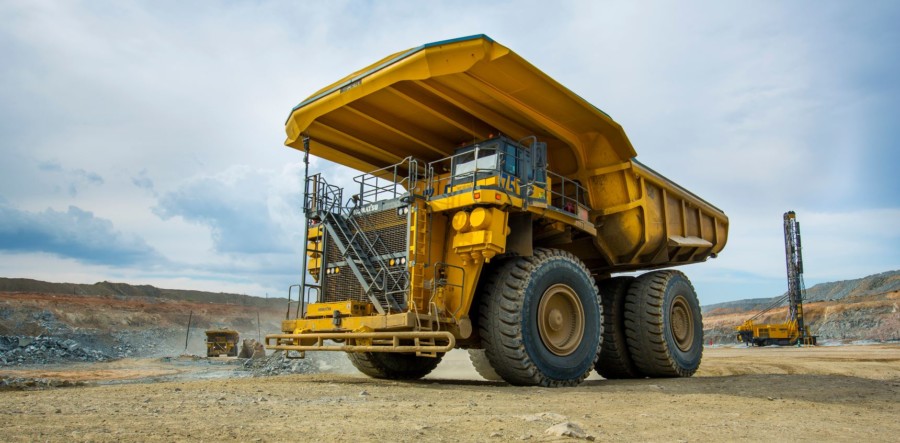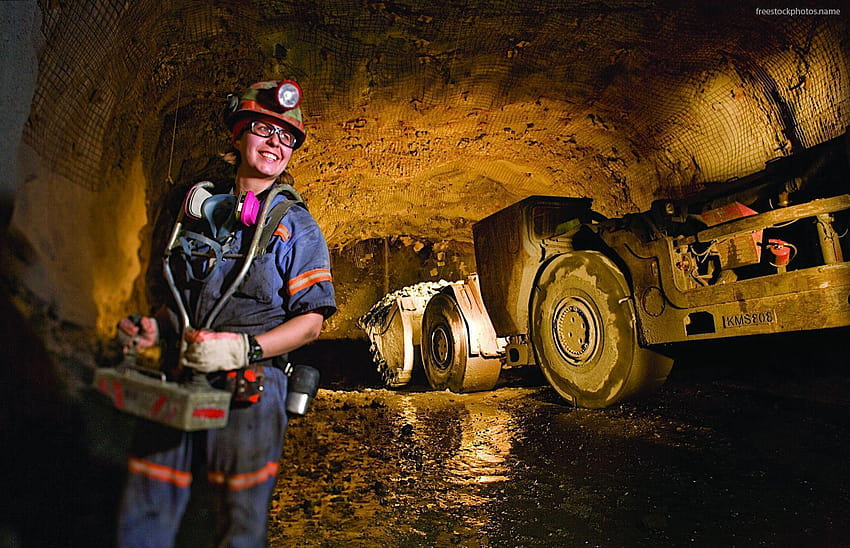This article addresses the critical role of eco-mining in environmental preservation, sustainability, mitigation of ecological impacts and social responsibility of the mining industry, it is presented as a promising solution to address the challenges faced by the current mining industry in its search of a more sustainable future.
One of the fundamental pillars of eco-mining is environmental preservation by reducing the carbon footprint. The implementation of eco-friendly practices, such as the adoption of low-impact technologies and the use of alternative energies in the mineral extraction and processing process, has proven to be effective in reducing greenhouse gas emissions.
The reuse of mining waste and the rehabilitation of depleted mining sites not only reduce environmental degradation, but also contribute to the restoration of damaged ecosystems. It is key in the mining industry, for the supply of essential resources for economic development and modern life.
Eco-Mining to reduce the carbon footprint.
One of the fundamental bases of eco-mining is the reduction of the carbon footprint of the industry. The adoption of low-impact technologies and the use of alternative energies during mineral extraction and processing have proven effective in reducing greenhouse gas emissions.
Sustainable mining solutions involve integrating green energy sources, such as solar, wind and hydroelectric, into mining operations. The mining industry handles large volumes of waste, such as tailings, which is the waste resulting from mineral concentration processes, and waste rock. However, mining practices are focused on minimizing the generation of waste and promoting the recycling of materials whenever possible.
In search of more sustainable solutions, advanced technologies for waste sorting and processing have been developed, with the aim of extracting valuable minerals from waste streams. This reduces the need for new extractions and minimizes the associated ecological impacts.
Water is a vital resource for mining operations, but it can also pose environmental and social challenges if not properly managed. Sustainable mining has promoted the implementation of water reuse and treatment systems 1 (Figure 1) , as well as responsible practices in its use.
Digitization and automation play a critical role in mining activities. Through the use of sensors, drones, and other monitoring devices, mining companies can optimize their operations more accurately and efficiently. Additionally, automation improves worker safety by reducing their exposure to hazardous conditions.

These innovations are transforming the mining industry, enabling a more responsible and efficient approach that seeks to maximize economic benefits and minimize environmental and social impacts associated with mining activity. They include the implementation of comprehensive ecosystem restoration programs. The companies carry out reforestation, land reclamation and biodiversity conservation efforts to restore ecological balance in areas affected by mining.
As global awareness of sustainability increases, the adoption of these innovations becomes increasingly important to the long-term viability of the mining sector. Pointing towards an increasingly competitive world, where the optimization of resources and the maximum use of material are absolutely necessary, this important economic and productive sector cannot be left behind.
Development of technology in eco-mining.
The development of technologies to optimize the economic exploitation of mineral resources, as well as to reduce environmental impact and increase efficiency at all stages of mining activity, is a key aspect in this industry.
It is essential to highlight the integration of new advances and technological developments for the benefit of a global improvement in the performance of mining operations. This implies the entry into production of increasingly complex and difficult deposits, as well as the reduction of costs and the creation of value.
The mining business, from exploration to mine closure, requires huge investments in terms of time and money. In addition, it is a sector with high levels of risk, where the success of the project for investors cannot be fully guaranteed.
The incorporation of new technologies, development of a new Fuel Cell Electric Vehicle (FCEV) (Figure 2), a superior class truck, which will become the largest hydrogen mining truck in the world 2 . The increase in investment, continuous and intensive training and changes in attitude towards safety and health are gradually achieving improvements in working conditions in large mining operations.

Eco-mining contributes to achieving the sustainable development goals (SDGs) because metals and minerals are necessary for the development of technology towards sustainable economies and for the improvement of national economies and human development. It also has the potential to positively affect the socioeconomic activities of rural communities in the ecosystems they operate. Long-term mine planning takes into account several decades, as well as future changes in demand, skill supply, weather, and power and water supply.
To meet these challenges, it is essential to adopt advanced technologies, such as digital mining, artificial intelligence, automation and the use of big data. These innovations allow more efficient management of resources, optimization of operational processes, greater safety for workers and more accurate decision making.
The so-called green technologies and infrastructures carry an essential aspect that is familiar to us: they all require large amounts of metals and minerals. This implies the opening of more and more mines, exacerbating the environmental and social consequences of extractivism.
Safety in eco-mining
Safety in both underground and open pit mining is a constant priority, and only through commitment and collaboration between companies, workers and regulatory authorities can a safer and more secure mining environment be achieved.
Risk is closely associated with the mining profession. since, unlike what happens with other industrial activities, in many cases neither the location nor the place of work are eligible.
Tasks in unfavorable working conditions is one of the characteristics of mining activity whose multiplicity of risk factors present are inherent to the technology used, the type and methods of work, its development and the type of exploitation.
In relation to the type of mining exploitation, there are two basic forms: the underground type and the so-called open pit.
Opencast mining
The International Labor Organization; defines a mine as a whole universe of possibilities: from traditional shafts and adits to modern surface mines.
But it is not only about the holes in the earth, but also about everything that surrounds them: buildings, constructions, dams, machinery and devices that are intertwined in this work of extracting and treating valuable minerals. Even the waste materials that emerge from the mine play an important role. It’s all part of this amazing and complex mine that reveals the secrets of the Earth and challenges us to find more sustainable and responsible ways to harness its riches without detriment to the environment.
Underground mining:
Underground mining has historically been recognized as a high-risk activity for the safety and health of workers. The extraction of minerals underground is determined by complex geological and mechanical conditions of the rocks, as well as by various factors such as altitude, climate, topography and geography, which influence the mining atmosphere and increase the level of danger associated with mining. this activity.
While there are common challenges to worker safety in both types of mining, underground mining presents particular characteristics that make it even more dangerous and demanding in terms of safety (Figure 3).
For this reason, all companies dedicated to the extraction of minerals must implement the necessary measures to ensure that the facilities, machinery and work equipment are equipped with protection devices and safeguards that guarantee their operation safely.

The importance of eco-mining for the global economy
Intense competition for mineral resources has emerged in Sub-Saharan Africa (SSA) in recent decades, fueled by industrial growth in countries such as China and India, as well as technological advancement and growing demand for green infrastructure.
The choice of mine type, whether underground or open pit, is often determined by the characteristics of the deposit. However, in some cases, the engineering design of mining structures is influenced by the need to protect critical ecosystems or nearby communities from the risks associated with eco-mining.
Mining companies conduct periodic assessments to determine whether investments carry greater corporate risks, such as loss of reputation, loss of licenses to operate or interruptions in operations, compared to financial benefits.
Eco-mining represents a profound and visionary approach that recognizes the critical role it plays in environmental preservation, sustainability, and mitigation of ecological impacts in the mining industry.
By directing its attention towards carbon footprint reduction, waste reuse, sustainable water management, implementation of digital technologies and ecosystem restoration, this practice shows its potential to radically transform the mining landscape, steering it towards a path that is more respectful of the environment and local communities.
The advancement of technology plays a crucial role in this process, as digital solutions, such as real-time monitoring, artificial intelligence and automation, enable more efficient and accurate management of resources, while ensuring security. of workers in potentially hazardous mining environments.
Conclusion
Eco-mining not only seeks to reduce the negative impacts of mining activity, but also to actively contribute to the conservation and restoration of affected ecosystems. This implies the implementation of rehabilitation and reforestation programs, as well as the promotion of biodiversity and the protection of key species in mining areas.
In summary, eco-mining offers an innovative and technological approach that seeks to balance the needs of the mining industry with the protection of the environment and the well-being of communities. Through the adoption of sustainable practices and the responsible use of resources, a promising future for mining can be achieved in harmony with sustainable development.
References
- https://www.ocmal.org/minera-eco-oro-mantendra-sus-operaciones-a-pesar-de-la-restriccion-en-paramo-de-santurban/
- https://www.autonocion.com/williams-advanced-engineering-camion-minero-2020/

